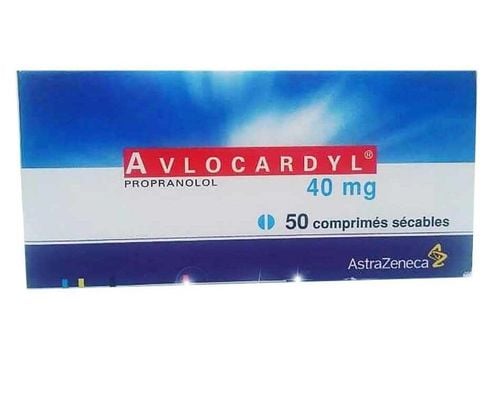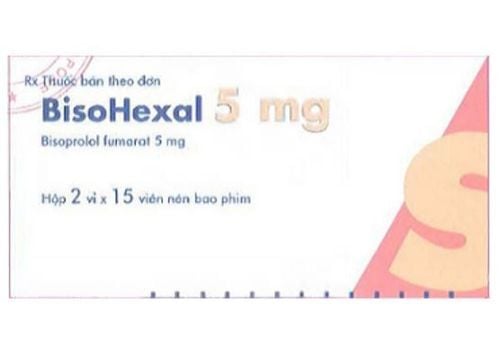Carvedilol is a neurohormonal antagonist with multiple mechanisms, inhibiting beta receptors non-selectively and combining vasodilatory effects through alpha-receptor inhibition. This active ingredient is present in Coryol 6.25 mg.
1. Indications of Coryol 6.25 mg
Coryol 6.25 mg, a product of KRKA, D.D., Novo Mesto, contains the active ingredient Carvedilol at a dosage of 6.25 mg. It is indicated for the treatment of the following conditions:
- Hypertension, either used alone or in combination with other medications, particularly often combined with thiazide diuretics.
- Mild or moderate heart failure due to ischemic heart disease or cardiomyopathy, in combination with digitalis, diuretics, and ACE inhibitors to reduce disease progression.
- Treatment of angina pectoris.
2. Mechanism of Action of Coryol 6.25 mg
Carvedilol in Coryol 6.25 mg is a racemic mixture of optical isomers, with the S(-) isomer being a non-selective beta-adrenergic antagonist. As such, Carvedilol is a neurohormonal antagonist through various mechanisms, inhibiting the B-adrenergic system (beta blocker) non-selectively. At the same time, Coryol 6.25 mg has vasodilatory properties due to selective alpha-adrenergic blockade.
The mechanism of action in treating hypertension involves vasodilation, mainly through selective alpha-receptor blockade, leading to reduced peripheral vascular resistance, and non-selective beta-receptor blockade. Both vasodilatory and beta-blocking effects occur at the same dosage.
Clinical studies have shown that the combination of alpha and beta receptor blockade results in a slight or no change in heart rate at rest, while maintaining stroke volume and blood flow to the kidneys and peripheral tissues.
3. Dosage of Coryol 6.25 mg
To prevent and limit the risk of orthostatic hypotension, Coryol 6.25 mg is recommended to be taken with food.
Dosage for Coryol 6.25 mg:
For Hypertension:
- Starting dose: 12.5 mg (2 tablets of Coryol 6.25 mg), taken once daily, after 2 days, increase to 25 mg/day.
- Alternatively, patients may start with 6.25 mg once daily, increasing to 12.5 mg twice daily after 1-2 weeks.
- If necessary, the dose may be increased further at intervals of at least 2 weeks up to a maximum dose of 50 mg/day, either as a single dose or divided into multiple doses.
Elderly hypertensive patients may only need 12.5 mg/day once daily if effective.
For Angina:
- Starting dose: 12.5 mg/day, divided into 2 doses. After 2 days, may increase to 25 mg/day, divided into 2 doses.
- For Heart Failure: Recommended dose: 3.125 mg (½ tablet of Coryol 6.25 mg) twice daily for 2 weeks. If tolerated, the dose may be doubled to 6.25 mg (1 tablet) twice daily.
- The dose may continue to be increased at intervals of at least 2 weeks up to a maximum recommended dose of 25 mg twice daily for patients under 85 kg, or 50 mg/day divided into 2 doses for patients over 85 kg.
- Prior to starting treatment for heart failure with Coryol 6.25 mg, patients on digitalis, diuretics, or ACE inhibitors must be stabilized on their current treatment regimen.
- The risk of decompensated heart failure and/or severe hypotension is highest in the first 30 days of treatment.
For Idiopathic Cardiomyopathy:
Dose: 6.25-25 mg twice daily.
Coryol 6.25 mg Dosage in:
- Renal Impairment: No dose adjustment is necessary for patients with renal impairment.
- Hepatic Impairment: Contraindicated for patients with hepatic impairment.
Overdose Symptoms and Treatment
- Symptoms of Carvedilol toxicity include cardiac disturbances, central nervous system toxicity, hypoglycemia, and hyperkalemia. The most common cardiac symptoms are hypotension and bradycardia.
- In severe overdose of Coryol 6.25 mg, atrioventricular block, ventricular conduction disturbances, and cardiogenic shock may occur, especially when used with membrane stabilizing drugs.
Treatment involves addressing the symptoms of:
- Seizures, hypotension, hyperkalemia, and hypoglycemia.
- Bradycardia and hypotension that are resistant to atropine, isoproterenol, or pacemaker therapy may require the use of glucagon.
4. Side Effects of Coryol 6.25 mg
Coryol 6.25 mg is generally considered safe for patients with heart failure (mild, moderate, or severe) or hypertension. However, some adverse effects have been reported, most of which are temporary and resolve after a short time. Most side effects occur when treatment is initiated. Common side effects include dizziness (approximately 10%) and headache (approximately 5%), as well as other symptoms such as:
- Muscle pain, fatigue, shortness of breath;
- Dizziness, orthostatic hypotension;
- Nausea.
Less Common Side Effects:
- Bradycardia;
- Diarrhea, abdominal pain;
- Thrombocytosis, leukopenia;
- Impaired peripheral circulation, potential syncope;
- Depression, sleep disturbances;
- Constipation;
- Skin rash, itching, psoriasis.
Management of Adverse Effects of Coryol 6.25 mg: To minimize the risk of bradycardia and other adverse effects:
- Start treatment with a low dose and gradually increase the dose, carefully monitor diastolic blood pressure and heart rate;
- Take Carvedilol with food.
- If the heart rate drops below 55 beats per minute, reduce the dose of Coryol 6.25 mg; avoid abrupt discontinuation.
6. Contraindications for Coryol 6.25 mg
Coryol 6.25 mg is contraindicated in the following conditions:
- Decompensated heart failure (NYHA Class III-IV) not treated with standard therapy.
- Bronchial asthma, bronchospasm (may lead to an asthma attack);
- Cardiogenic shock, severe bradycardia, second- or third-degree atrioventricular block;
- Severe liver dysfunction, symptomatic liver failure;
- Hypersensitivity to any component of Coryol 6.25 mg.
Precautions When Using Coryol 6.25 mg
- Caution in patients with heart failure treated with digitalis, diuretics, or ACE inhibitors due to the risk of hypotension and/or delayed atrioventricular conduction.
- Caution in patients with poorly controlled or uncontrolled diabetes, as Coryol 6.25 mg may mask symptoms of hypoglycemia.
- Discontinue treatment if signs of liver damage appear.
- Caution in patients with peripheral artery disease or thyroid toxicity.
- Avoid abrupt discontinuation; reduce the dose over 1-2 weeks.
- Carvedilol may impair alertness, affecting the ability to drive or operate machinery.
Use in Pregnancy and Lactation:
- Pregnancy: Carvedilol has shown clinical harm to the fetus and should only be used during pregnancy if the benefit outweighs the risk. Avoid use in the third trimester.
- Adverse effects on the fetus include bradycardia, hypotension, respiratory depression, hypoglycemia, and hypothermia in newborns.
- Breastfeeding: Carvedilol is excreted in breast milk.
7. Drug Interactions with Coryol 6.25 mg
- Like other beta-blockers, Carvedilol may increase the effects of antihypertensive drugs, leading to hypotension.
- Caution when using Carvedilol with antiarrhythmic drugs or calcium channel blockers such as verapamil or diltiazem due to the risk of conduction disturbances when used together.
- Do not inject intravenous calcium channel blockers or antiarrhythmic drugs during Carvedilol treatment. Discontinue Carvedilol several days before tapering off clonidine.
- When used with digoxin, the steady-state peak concentration of digoxin may increase by approximately 16% in hypertensive patients. Enhanced monitoring of digoxin levels is necessary.
- Carvedilol enhances the hypoglycemic effect of insulin and oral hypoglycemic agents, and hypoglycemic symptoms may be masked or reduced.
- Caution is required when using Coryol 6.25 mg in patients taking enzyme inducers (e.g., rifampicin) or enzyme inhibitors (e.g., cimetidine), as Carvedilol serum concentrations may decrease or increase, respectively.
To arrange an appointment, please call HOTLINE or make your reservation directly HERE. You may also download the MyVinmec app to schedule appointments faster and manage your reservations more conveniently.








